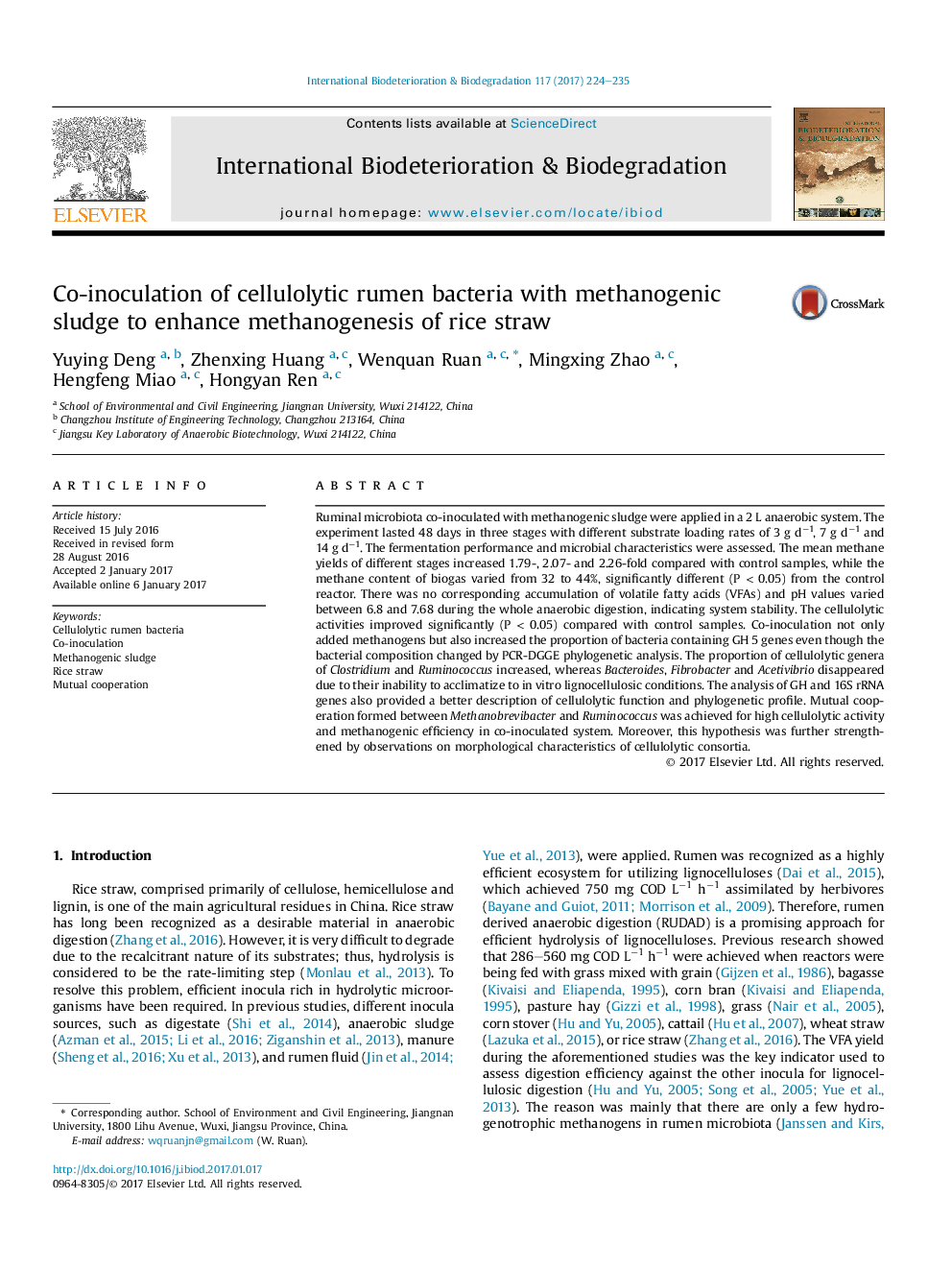| کد مقاله | کد نشریه | سال انتشار | مقاله انگلیسی | نسخه تمام متن |
|---|---|---|---|---|
| 5740507 | 1616300 | 2017 | 12 صفحه PDF | دانلود رایگان |
- Co-inoculation significantly increased the biodegradability of rice straw.
- The analysis on 16S rRNA and GH 5 genes correlated phylogenetic diversity with cellulolytic function.
- Co-inoculation not only added methanogens but also clearly altered the composition of cellulolytic bacteria.
- Enhancements observed are due to mutual interactions formed between Methanobrevibacter and Ruminococcus.
Ruminal microbiota co-inoculated with methanogenic sludge were applied in a 2 L anaerobic system. The experiment lasted 48 days in three stages with different substrate loading rates of 3 g dâ1, 7 g dâ1 and 14 g dâ1. The fermentation performance and microbial characteristics were assessed. The mean methane yields of different stages increased 1.79-, 2.07- and 2.26-fold compared with control samples, while the methane content of biogas varied from 32 to 44%, significantly different (P < 0.05) from the control reactor. There was no corresponding accumulation of volatile fatty acids (VFAs) and pH values varied between 6.8 and 7.68 during the whole anaerobic digestion, indicating system stability. The cellulolytic activities improved significantly (P < 0.05) compared with control samples. Co-inoculation not only added methanogens but also increased the proportion of bacteria containing GH 5 genes even though the bacterial composition changed by PCR-DGGE phylogenetic analysis. The proportion of cellulolytic genera of Clostridium and Ruminococcus increased, whereas Bacteroides, Fibrobacter and Acetivibrio disappeared due to their inability to acclimatize to in vitro lignocellulosic conditions. The analysis of GH and 16S rRNA genes also provided a better description of cellulolytic function and phylogenetic profile. Mutual cooperation formed between Methanobrevibacter and Ruminococcus was achieved for high cellulolytic activity and methanogenic efficiency in co-inoculated system. Moreover, this hypothesis was further strengthened by observations on morphological characteristics of cellulolytic consortia.
Journal: International Biodeterioration & Biodegradation - Volume 117, February 2017, Pages 224-235
